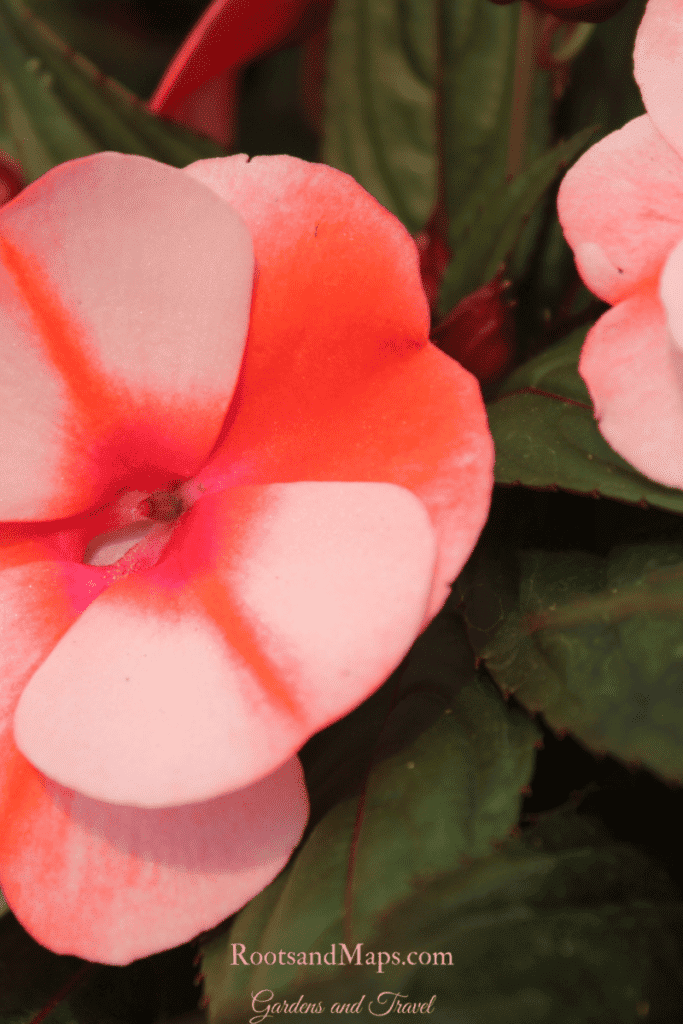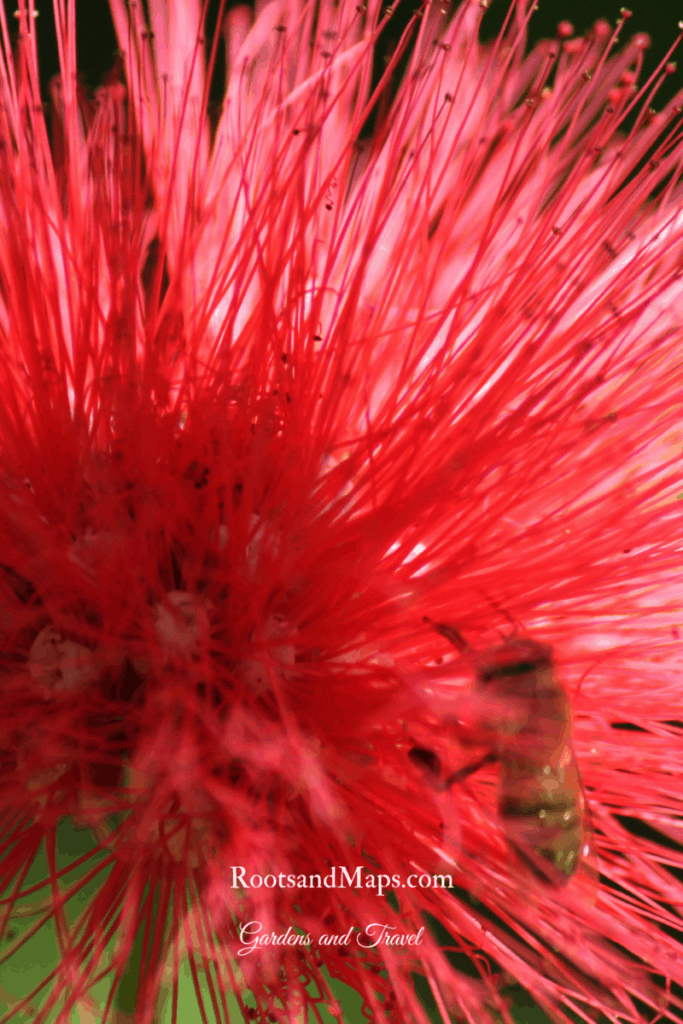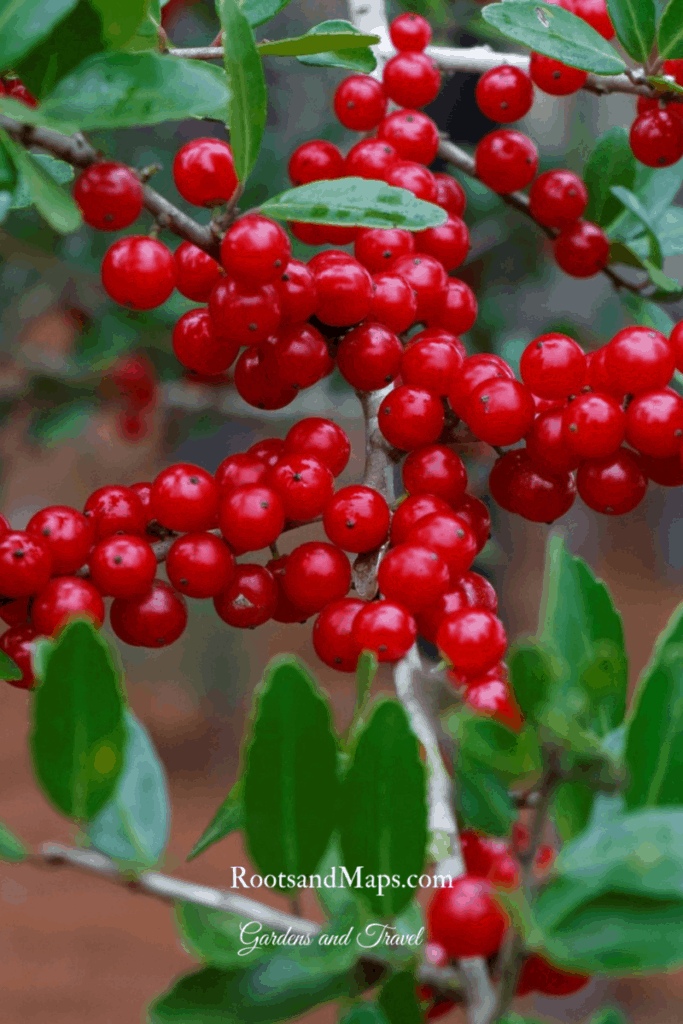Botanicus Can’t Rememberus
Why You Want To Learn Botanical Latin
Why should we bother? The truth is that most people who love plants don’t bother. The plants have common names that we know (or think we do!) Learning it takes time-and who has lots of that?
My job is to convince you that it’s worth the effort. The payback will be big. You do not have to be a Latin scholar. Botanical Latin is a hybrid anyway. There is some Latin, some Greek, and some words you will recognize. Pronunciation is less important- because this is not classical Latin. It is a language growing every day.
Binomial Nomenclature
What you will want to learn is simply a two-word name for each plant. It’s clean and concise. The name describes the plant and you can go to the garden center and come home with the plant you actually intended to buy. “Try it -you’ll like it”.
In a Nutshell-Binomial Nomenclature
- What it is
- Why we need it
- How Linnaeus helped us
- What’s in a name
- Some memory tricks
- Solving the tongue twisters
What Is Binomial Nomenclature
In binomial nomenclature, the genus is the noun, and the species modifies it, it’s the adjective. These two words in Botanical Latin are telling you precisely what the plant is.
| Genus First | species Second | Example |
| Genus is general | species is specific | Mimosa strigillosa |
| Genus word starts with a capital | species word is always lowercase | Also called “Powderpuff” |
| Use italics if printed | Use italics if printed | “Powder Puff”, is a cute name. |
| Underline if handwritten | underline if handwritten | Powderpuff is also partially descriptive-it’s the part that’s not descriptive that can create a problem. A little later, I’ll tell you how. |
Why We Need Binomial Nomenclature
Advocates of learning binomial nomenclature love to use examples. Finding confusing stories is not hard. Here are two situations in which unclear terms can cause problems for us all.
My Impatiens-My Mom’s Patient Lucys!

In my South Florida garden, if I want a little more winter color, I can add some Impatiens. Years before, when my mom wanted a little more summer color around her New England farmhouse, she added some Patient Lucys.
So what’s the problem, you ask? Well, of course, they are the same identical plant! It gets worse, my mom’s friends also called them Busy Lizzies. So which name is right and how do we figure out how to grow them?
The easy way is to use their true name. Look up the Genus and species, Impatiens walleriana and you will know the growing conditions for this plant.
It is named for British churchman, Horace Waller who found it while seeking the head of the Nile River on the expedition of David Livingstone.
Waller went along because the two men opposed the slave trade and thought that the extreme publicity of finding the head of the legendary Nile river would end the whole business!
Tell me you can tend these pretty plants without thinking of that story!
Powderpuff, Powderpuff, Powderpuff
In our warm climate, we love to use three plants all called Powderpuff.
The three have one similarity. It is a little round bud that looks like a button. It blossoms into a fuzzy round puffball. Cheerleaders would love this plant. They would have to share it though.
Bees and butterflies love it too!

How Are They Different?
Ah, that’s the issue. The three plants have vastly different sizes.
Mimosa strigillosa is a tiny, low-growing ground cover. It is a fast-growing, mat-forming, low-maintenance plant and charms us all, especially children. Run your finger along the leaves and they curl themselves up. it is native to most of the gulf states and you can grow it also in Georgia and Arkansas.
Calliandra emanginata. This is a dwarf shrub with the same charming puffballs. It is not a very small shrub but you can keep it trimmed to 3′. It grows in part sun to full sun and is cold tolerant from zone 9b and below. (Find your hardiness zone. This is a USDA map. Just put in your zip code to see your planting zone.)
Calliandra haematocephala. You can treat this as a very large shrub, of perhaps 6-8′. It makes a very attractive flowering tree of about 15′. Its puffballs are quite large and noticeable. It is an excellent tree for a small space and is available in red, and pink. See also Calliandra surinamensis, which has white fan-shaped blossoms with pink tips.
In the right environment, they are attractive additions to the garden. You would not just order a “powderpuff” from the garden center, though. You might get a surprise! The three binomial names will get you to the right plant.
How Linnaeus Helped Us
Well if you have so far, disappointed your mother-do not give up hope! Carl Linnaeus was the child of a family in which the father was a churchman with a love for botany. His mother wanted him to be a theologian. While obviously intelligent and devoted to plants he was not regarded as much of a scholar. He eventually went to medical school (which had a lot to do with botany) and became a successful doctor. Mom really wanted to say, “my son the theologian” but she eventually accepted the idea.
Linnaeus And Botany
His real love was plants of all kinds. He was talented at simplifying complex problems and was innovative and pragmatic. Linnaeus invented the file card and talked his friend Anders Celsius into inverting his temperature scale. (Celsius, originally, had boil at 0 and freezing at 100.) If you think numbers should go up thank Linnaeus.
Linnaeus gave us this
Linnaeus produced two really important simplifications for plant id. Here they are.
| Hierarchical Classification-grouping of species in classifications | Binomial Nomenclature |
| Kingdom | Genus-species |
| Phylum | |
| Class | |
| Order | |
| Family | |
| Genus | |
| species |
Why Did Linnaeus Need To Do All This Work?
People who need plants (that would be those of us who need to eat) have always had the related requirement to name and classify the plants they valued.
As the number of plants that we knew through history kept growing, people have been glad to have them. Life, however, became more complicated. Linnaeus lived late in the Age of Exploration when Europeans searched the world for something new. Their wooden ships were not large but lots of seeds fit in a ship. He also lived in the Age of Enlightenment when the importance of reason and the evidence of the senses were important.
The new plant materials were exciting and people attempted to name and classify them. That was the problem -too many systems with names too complicated.
Here is the pre-Linnaean name(s) for a common plant. Two of them in fact. This had to stop.

Two names for the same little plant, one is 5 words long and the other 7! Some plants had 12-word names.
What’s In A Name?
“Lots of Information”
Campanula Rotundifolia
There are dozens of bellflowers, this one is bell-shaped and has round leaves.
So Many Words So Little Time
This is a quick history of the growth of known plant material. It quantifies the problem of identification.
It is interesting to know that between the Renaissance and the Age of Reason, plant data exploded. It was handled, with the help of a good organizer by scholars, who shared information on horseback and worked without computers, phones, or even pens!
We are not the only people to deal with a data storm! It just feels like it.
The Botanists and What They Knew
- Theophrastus (successor to Aristotle and Father of Botany) lived between 371-287 BC- and he knew 500 plants
- Pliny the Elder-AD 23-79-knew 1000
- Botanists of the 15-16th century knew about 4000
- Linnaeus in the 18th century knew about 7300
- Modern botanists know about 250,000-300,000 flowering plants.
Some Memory Tricks That Will Help With Botanical Latin
Because the binomial names are descriptive they will help you learn about the plant. Despite the language problem, there are pretty good clues in the names. Here are a few descriptive words that should help.

This is a good one to know. Yaupon Holly is an attractive holly plant throughout the south. That’s nice, but we can do better. Its binomial name is
Ilex vomitoria. Does that tell you how to behave around this plant?
You are not going to speak Latin when you finish this article. You should, at least, know some clues that should get you started. It’s like riding a bicycle. Keep at it and you’ll get better. There are a lot of descriptive words that will help. Start with those which indicate, color, shape, behavior, habitats, attributes, and even where they come from. Here are a few lists.
Plants Named For
Trees
- acer-maple
- betul-beech
- lauri-laurel
- popul-poplar
- querce-oak
- salic-willow
- syl-forest
- arbor-tree
Leaves
- acerifolia-maple like
- angustifolia-slender
- aquifolius-spiny
- buxifolius-boxwood like
- ilicifolius-holly like’
- laurifolius-laurel like
An Example

Bougainvillea arborea is the only tree form of the flowering bougainvillea. Louis Antoine de Bougainville (1729-1811), a French Admiral and explorer, had a remarkable career, Consider this, he fought against the British in the American Revolution, in1763, he circumnavigated the globe, brought settlers to populate the Falklands Islands, and had an island in Papua New Guinea and the bougainvillea plant named for him.
The Stories You Will Learn
For me, this was the bonus surprise of learning how plants are named. Try this Impatiens walleriana, the pretty flower we plant in summer was named for Horace Waller, an English churchman and friend of the explorer, David Livingstone. They believed that if they accomplished the dangerous feat of finding the source of the Nile river they would convince the world to end the slave trade! Now tell me that you can plant impatiens and not think of that!
Look For Things Plants Are Named For
Country of Origin
- Aethiopia-Ethiopia, Africa
- Barbadensis-Barbados
- Benghalensis-Bengal, India
- Chinesis-China
- Helvetic-Switzerland
- Iber-Spain
- Japon-Japan
- Java-Java
- Zeyloniea-Ceylon. Sri Lanka
Shape
- ampul-flask
- angust-narrow
- astr-star
- cyrt-curved
- flabell-fan like
- lanc-lance like
- oliv-olive
- pachy-thick
- pinn-feather
- plic-folded
- ntub-tube
- otuund-round
Color
- alb-white
- amethysti-amethyst
- arg-silver
- aurea-gold
- azu-blue
- coccin-red
- caerul-blue
- eben-ivory
- flamm-flame
- luteolus-pale or greyish yellow
- roseus-rose
- rubellus-pure red
A good source for loads of colors in a color-coded list
Habitat
- aqu-water’
- litho-stone
- llitor-shore
- marit-seashore
- rivu/riva-river
Pronunciation Tips
Botanical Latin is a written language. Pronunciation does vary. If you are not perfect it is not a big deal. The most important point is to BREAK DOWN THE WORDS. Here is how.
- Separate the syllables-break the word down
- Each vowel is a separate syllable
- Pronounce each vowel
- For a 2 syllable word-accent the first syllable
- For a 3 or more syllable word-accent the 2nd last syllable
Example: Abelia Grandiflora=uh-BEEL-yuh gran-dif-FLORE-uh
This is a good pronunciation dictionary: Dave’s Garden, Botanary.
What if I Just Can’t Get Some of Them?
It happens. If you have a few that you cannot remember-try this. It sounds silly but make yourself an avatar. By that I mean take that plant and give it a persona. Make it memorable, somebody you will not forget.
When preparing for my final Master Gardener exam for some reason I could not remember an important plant. It is called Colocasia esculenta. People call it “Elephant Ears”. It is the Taro plant and it is very important in the world today.
Taro is one of only 15 edible plants in the world today (of 50,000+) that make up 90% of the global food energy. National Geographic. So this tropical plant is important in a good way. The plot thickens, in the US gulf states, it is a devastating invasive plant. It takes over waterways and eliminates the local flora. For me living in a gulf state, it is important to remember and identify it.
It just did not stick and my exam was near. In desperation, I remembered that high school teacher we all loved to hate. You remember, the one who loved to flunk people? I named her “Colocasia esculenta. I gave her hair in a big bun, with a pencil in it, a big sharp ruler, a unibrow, and just the hint of a mustache.
I never forgot that plant!
